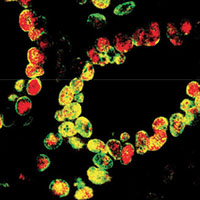Peribiliary gland damage due to liver transplantation involves peribiliary vascular plexus and vascular endothelial growth factor

Submitted: 7 March 2019
Accepted: 23 April 2019
Published: 10 May 2019
Accepted: 23 April 2019
Abstract Views: 1548
PDF: 617
Supplementary: 0
HTML: 8
Supplementary: 0
HTML: 8
Publisher's note
All claims expressed in this article are solely those of the authors and do not necessarily represent those of their affiliated organizations, or those of the publisher, the editors and the reviewers. Any product that may be evaluated in this article or claim that may be made by its manufacturer is not guaranteed or endorsed by the publisher.
All claims expressed in this article are solely those of the authors and do not necessarily represent those of their affiliated organizations, or those of the publisher, the editors and the reviewers. Any product that may be evaluated in this article or claim that may be made by its manufacturer is not guaranteed or endorsed by the publisher.
Similar Articles
- D. Nowak, A. J. Mazur, A. Popow-Woźniak, A. Radwańska, H. G. Mannherz, M. Malicka-Błaszkiewicz, Subcellular distribution and expression of cofilin and ezrin in human colon adenocarcinoma cell lines with different metastatic potential , European Journal of Histochemistry: Vol. 54 No. 2 (2010)
- Q. Li, F. Zhang, S. Zhang, X. Sheng, X. Han, Q. Weng, Z. Yuan, Seasonal expression of androgen receptor, aromatase, and estrogen receptor alpha and beta in the testis of the wild ground squirrel (Citellus dauricus Brandt) , European Journal of Histochemistry: Vol. 59 No. 1 (2015)
- Nan Li, Xue Fan, Lihong Liu, Yanbing Liu, Therapeutic effects of human umbilical cord mesenchymal stem cell-derived extracellular vesicles on ovarian functions through the PI3K/Akt cascade in mice with premature ovarian failure , European Journal of Histochemistry: Vol. 67 No. 3 (2023)
- Simon Schöfer, Sylvia Laffer, Stefanie Kirchberger, Michael Kothmayer, Renate Löhnert, Elmar E. Ebner, Klara Weipoltshammer, Martin Distel, Oliver Pusch, Christian Schöfer, Senescence-associated ß-galactosidase staining over the lifespan differs in a short- and a long-lived fish species , European Journal of Histochemistry: Vol. 68 No. 1 (2024): 1954-2024: 70 Years of Histochemical Research
- L. Vinci, A. Ravarino, V. Fanos, A.G. Naccarato, G. Senes, C. Gerosa, G. Bevilacqua, G. Faa, R. Ambu, Immunohistochemical markers of neural progenitor cells in the early embryonic human cerebral cortex , European Journal of Histochemistry: Vol. 60 No. 1 (2016)
- Yin Pan, Di Qiu, Shu Chen, Xiaoxue Han, Ruiman Li, High glucose inhibits neural differentiation by excessive autophagy via peroxisome proliferator-activated receptor gamma , European Journal of Histochemistry: Vol. 67 No. 2 (2023)
- A. Rus, M.L. Del Moral, F. Molina, M.A. Peinado, Upregulation of cardiac NO/NOS system during short-term hypoxia and the subsequent reoxygenation period , European Journal of Histochemistry: Vol. 55 No. 2 (2011)
- Y. Asara, J. A. Marchal, P. Bandiera, V. Mazzarello, L. G. Delogu, M. A. Sotgiu, A. Montella, R. Madeddu, Cadmium influences the 5-Fluorouracil cytotoxic effects on breast cancer cells , European Journal of Histochemistry: Vol. 56 No. 1 (2012)
- R. Ambu, L. Vinci, C. Gerosa, D. Fanni, E. Obinu, A. Faa, V. Fanos, WT1 expression in the human fetus during development , European Journal of Histochemistry: Vol. 59 No. 2 (2015)
- Kentaro Nishida, Saho Bansho, Akiko Ikukawa, Teruyo Kubota, Akihiro Ohishi, Kazuki Nagasawa, Expression profile of the zinc transporter ZnT3 in taste cells of rat circumvallate papillae and its role in zinc release, a potential mechanism for taste stimulation , European Journal of Histochemistry: Vol. 66 No. 4 (2022)
<< < 1 2 3 4 5 6 7 8 9 10 > >>
You may also start an advanced similarity search for this article.

 https://doi.org/10.4081/ejh.2019.3022
https://doi.org/10.4081/ejh.2019.3022










